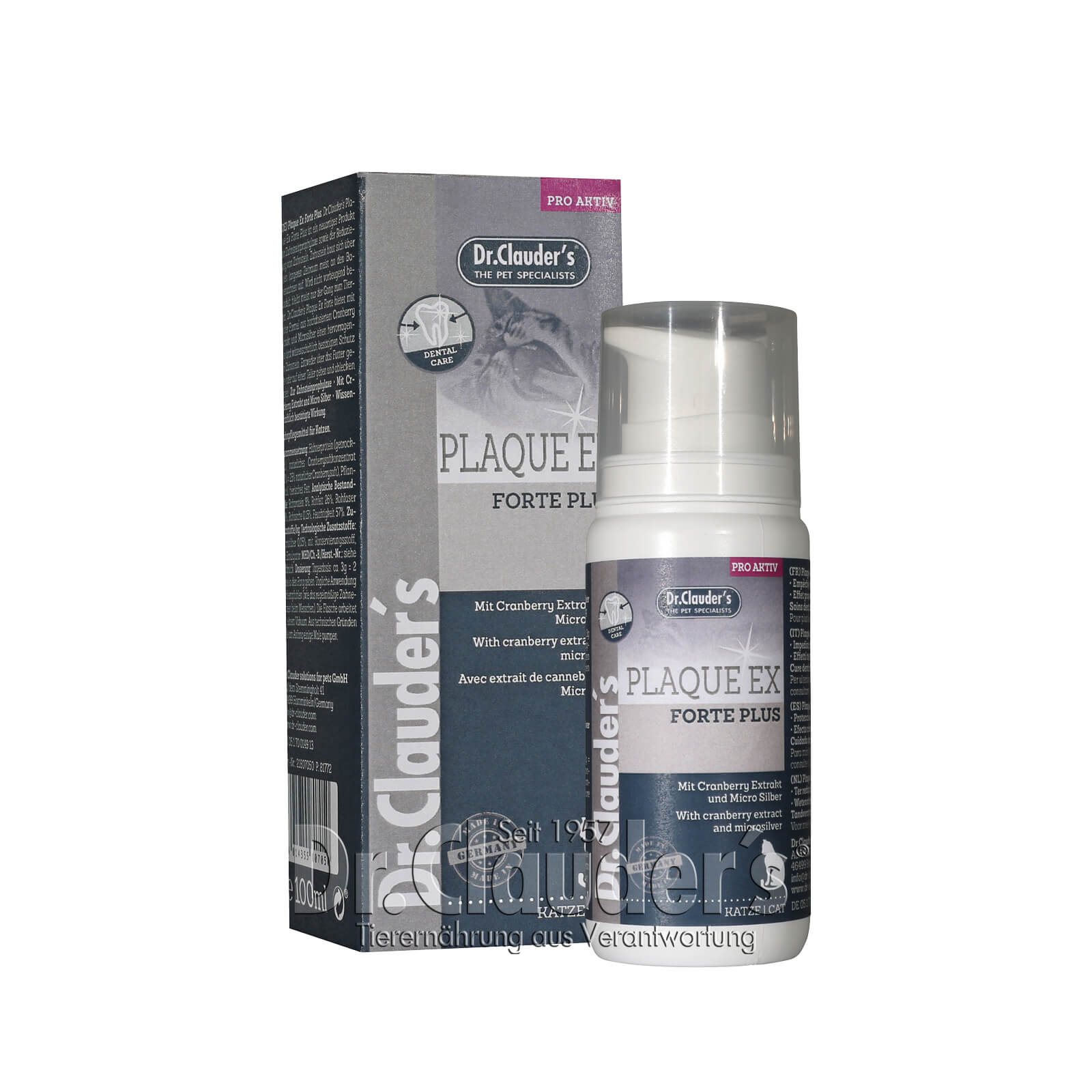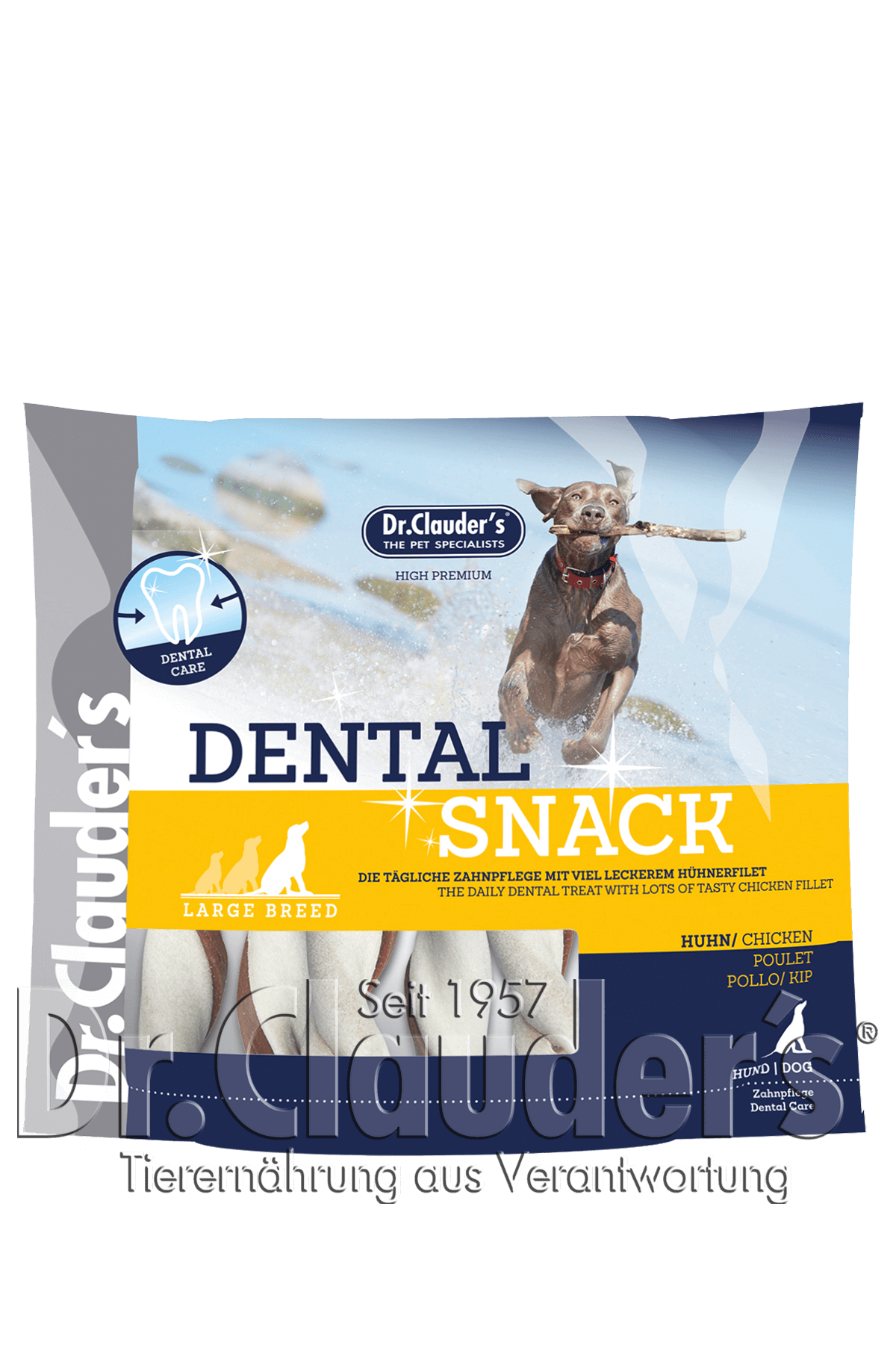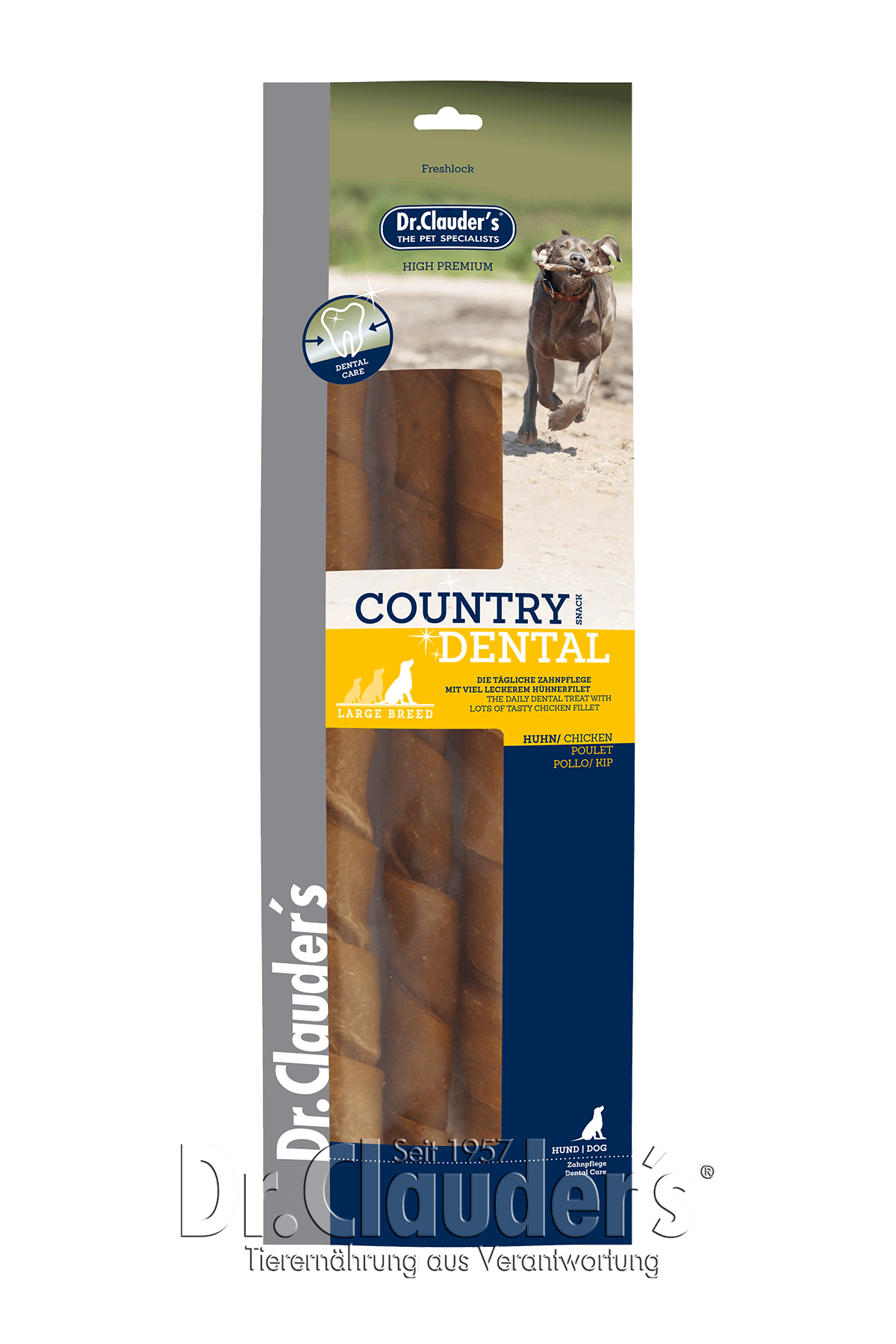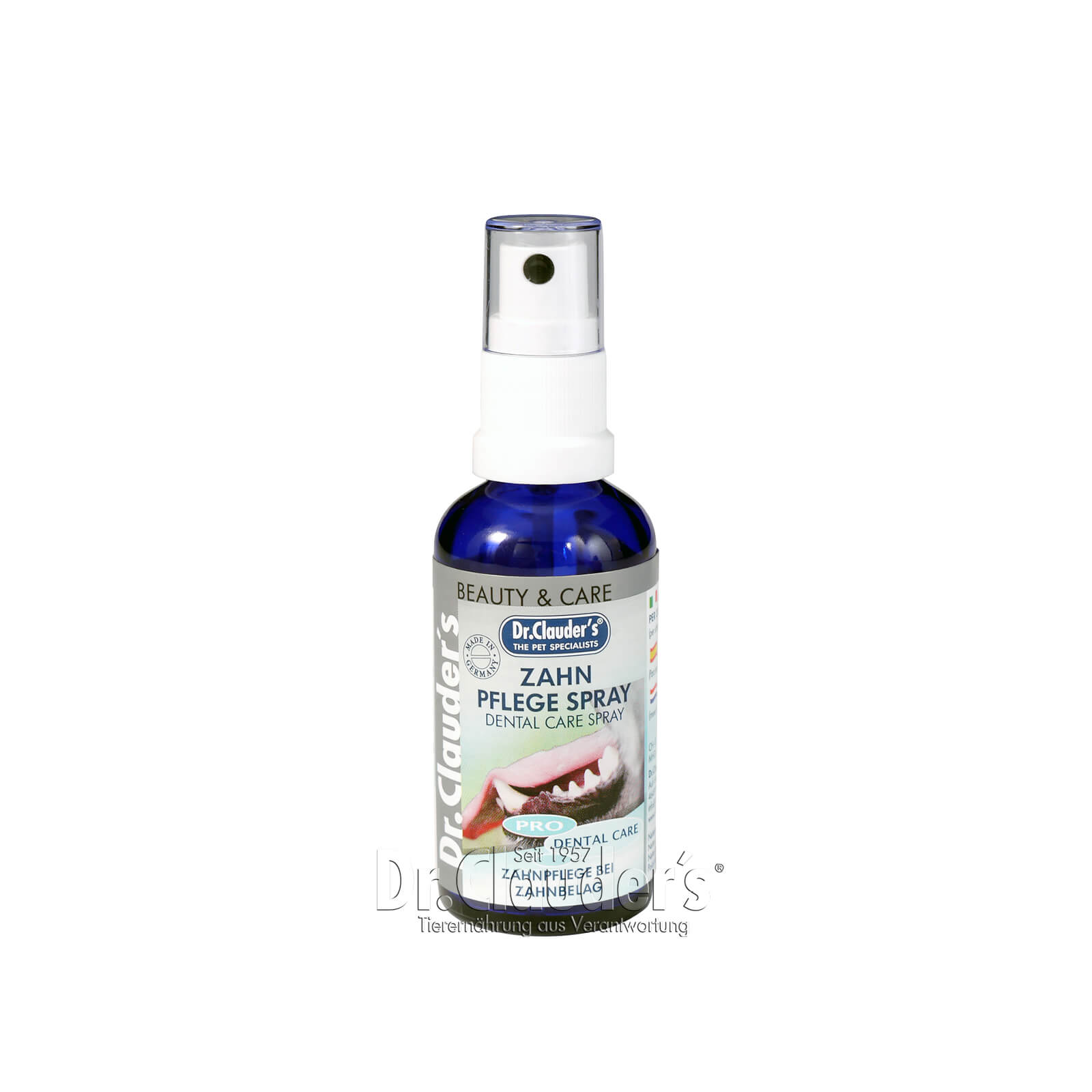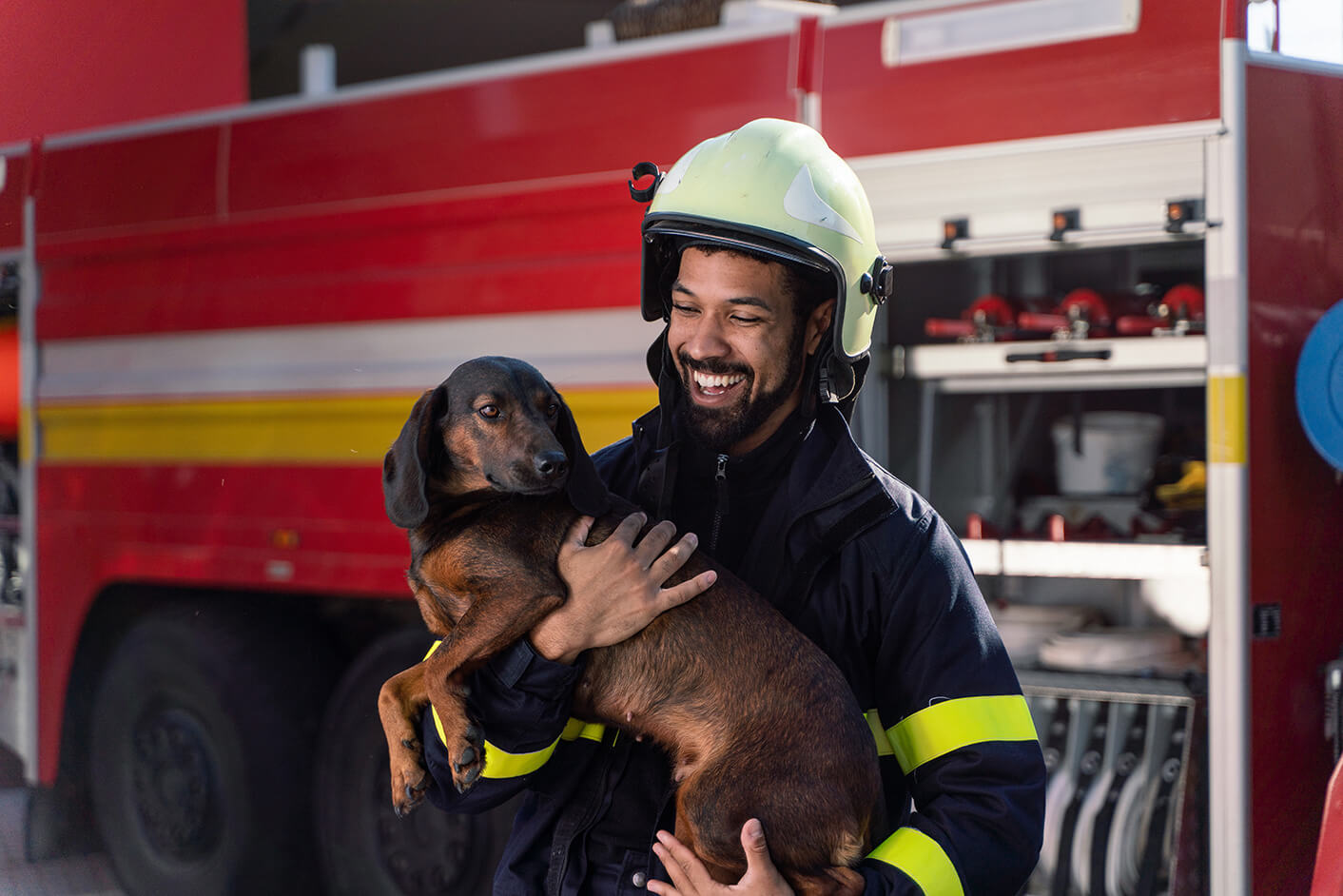Included in this article:
- Toothache symptoms
- Dangers & Diseases
- The right dental care
- Teeth change in puppies
- Points to note
- Product tips
Why your dog's dental care is important
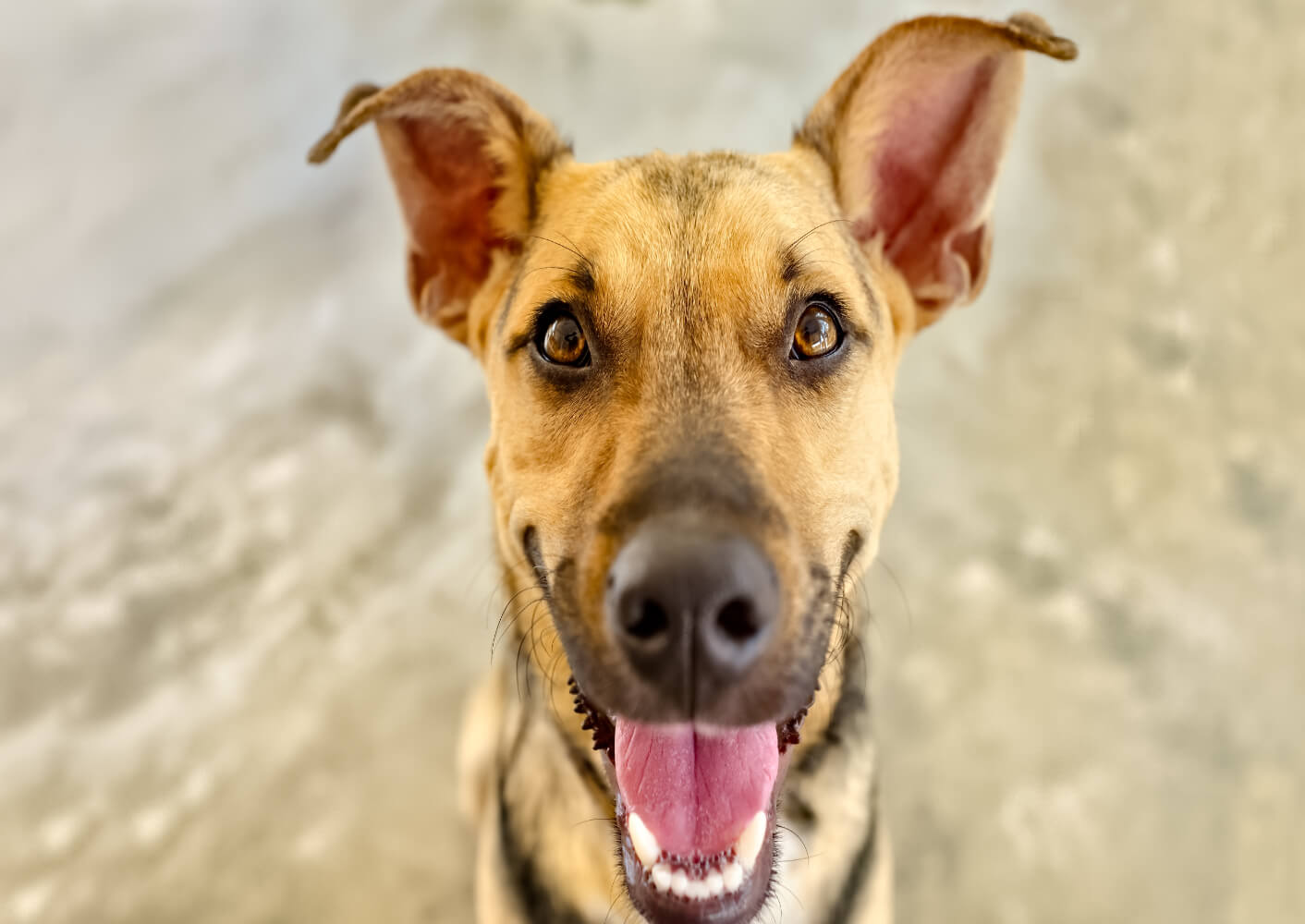
Who doesn't like to be enchanted by the bright white smile of their four-legged friend? A well-groomed set of teeth is an expression of your dog's good health.
If your dog suffers from toothache or gum problems, he cannot chew his food properly. The result: the unchewed food releases too few nutrients. Unclean teeth can also cause serious health problems for your dog.
This article tells you what you can do for your dog's oral hygiene and whether you need to use a toothbrush.
Ouch, toothache! How to recognise the symptoms
The most unpleasant warning signal for dental problems is persistent bad breath - this can indicate plaque, for example. If your dog suffers from toothache, this is often accompanied by a change in behaviour - typical symptoms include low spirits, listlessness, whining, drooping ears or a tucked tail.
Eating behaviour can also change: For example, chewing snacks and dry food may be disdained and soft wet food preferred.
If a dog suffering from toothache does get up the courage to eat, it often chews on one side only and holds its head at an angle while chewing. It can also be observed that he shifts the food back and forth in his mouth, chattering with his teeth or shaking his head. Scratching or rubbing the muzzle can also be signs that the dog has a toothache.
Also look out for the following symptoms:
- Purulent teeth
- Fractures or fracture lines on teeth
- Plaque (yellowish/brownish discolouration)
- Inflamed transition from gum to tooth or gum recession
- Bleeding
- Painful reactions when palpating the lips and gums
In the case of advanced inflammation of the teeth, inflammation of the eye area and purulent nasal discharge may also occur.
Now at the latest it is time to go to the vet clinic! Off to the veterinary clinic!
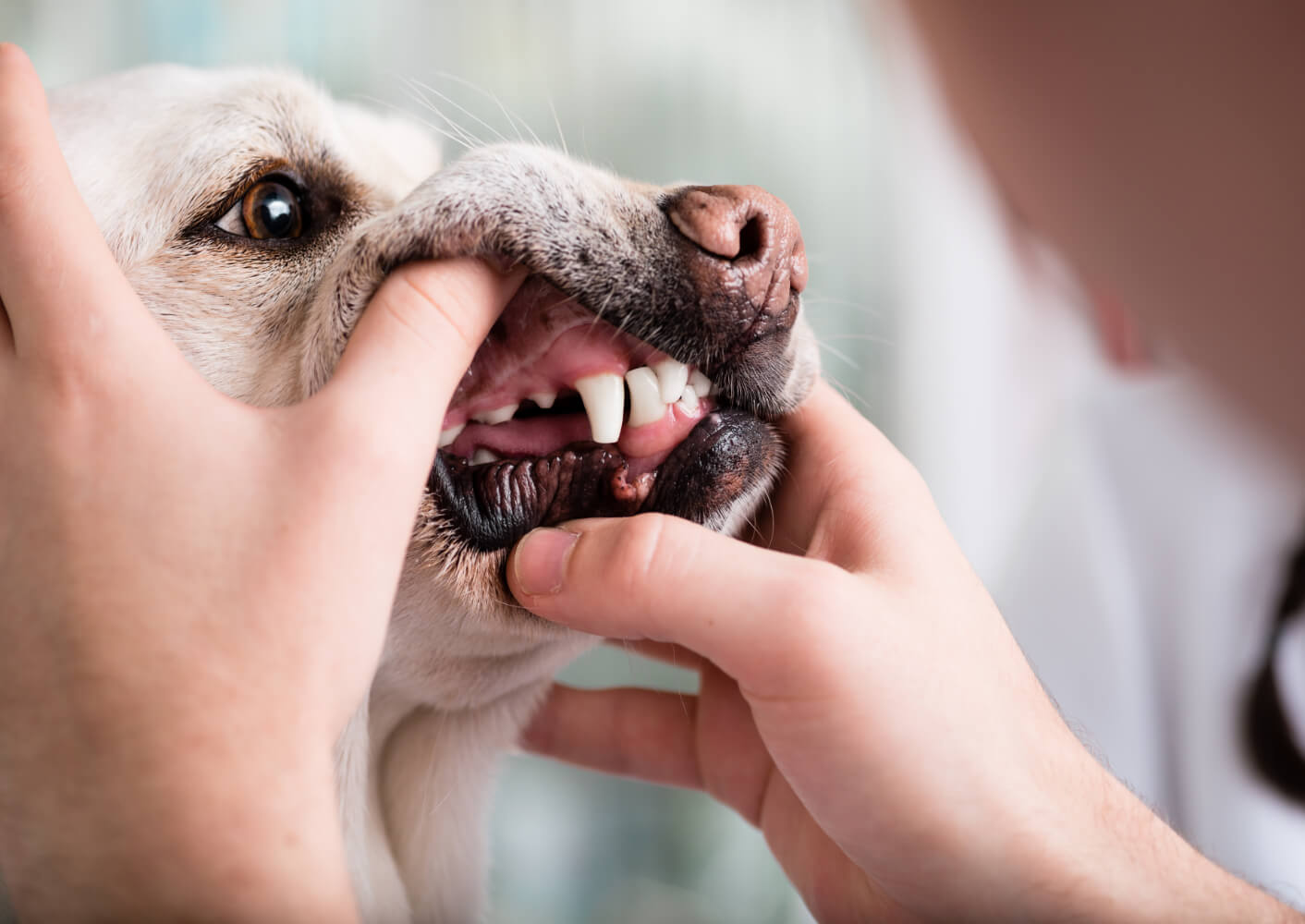
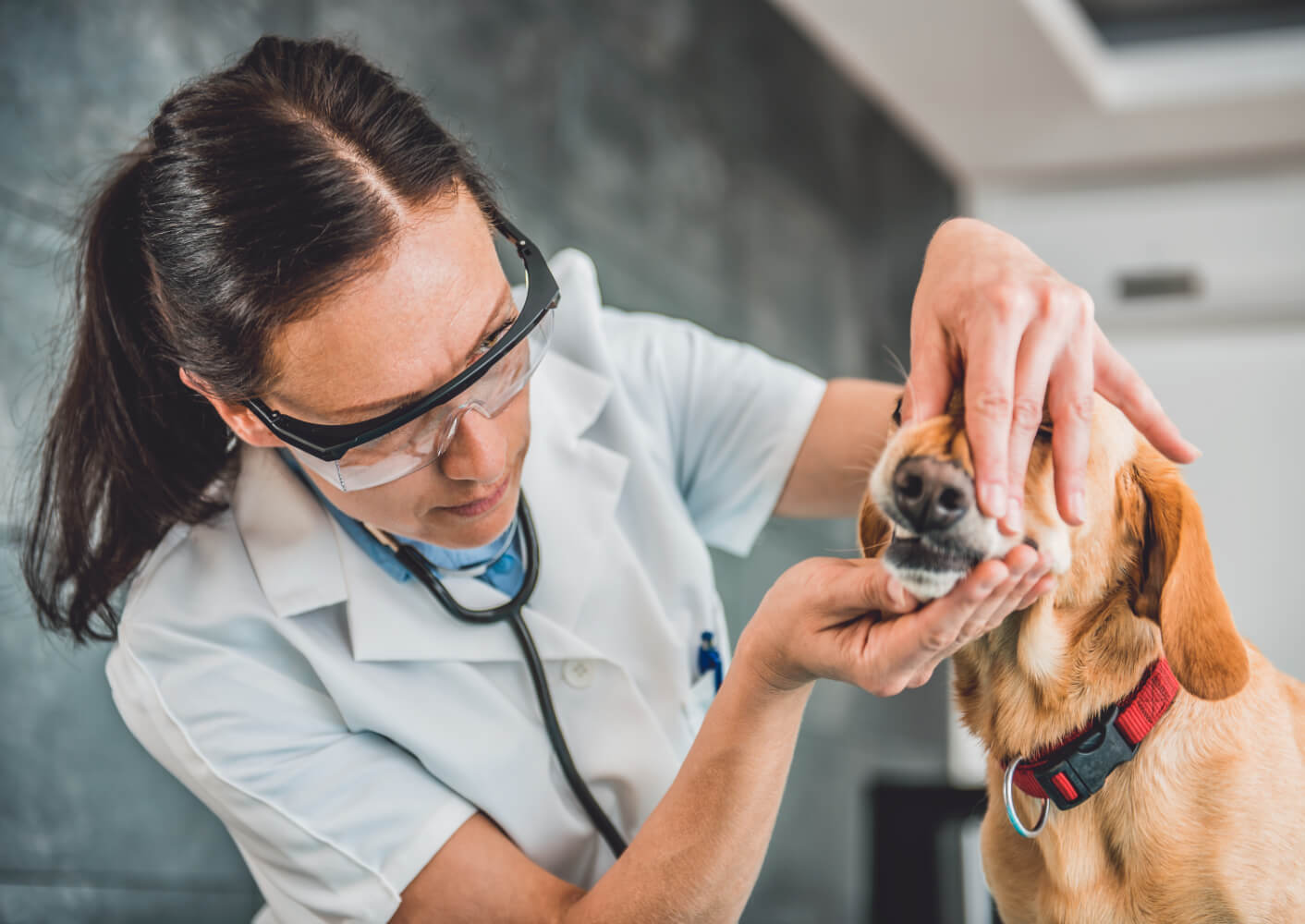
Dangers and diseases caused by unkempt teeth
Bad breath
It is not normal for your dog to have bad breath. On the contrary, it indicates that too many unwanted bacteria are populating his mouth and he is in desperate need of dental care.
Causes of bad breath:
- Feeding methods such as barfing (feeding your dog organic raw meat).
- Leftovers
- Low quality canned/wet food
The soft consistency of the food does not promote tooth abrasion - such as high-quality dry food. The result is white plaque. Food residues and bacteria provide an ideal breeding ground for plaque. You should counteract white plaque with regular dental care - otherwise tartar will develop in combination with the minerals from your dog's saliva.
Advanced tartar manifests itself as yellow-brownish deposits on the tooth. These must be removed by a veterinarian. It is worthwhile to check the teeth regularly: teeth once affected by tartar are more susceptible.
Gum inflammation
Tartar can lead to inflammation of the gums around the affected tooth. But it can get worse: severe infestation can cause the gums (periodontosis) and bone to recede (periodontitis). The back molars and canines are particularly often affected.
Another cause of gingivitis is foreign bodies: chewing stones, sticks and other sharp objects favours injury to the gums and inflammation.
Treatment :
The vet will perform a thorough cleaning of the teeth, usually under anaesthetic. In addition, an antibiotic is often administered.
Tooth loss
Tooth loss can be the result of untreated periodontitis or periodontosis. But it can be even worse for your pet: The bacteria can enter the body through the mouth and damage internal organs (heart and kidneys).
Caries
Caries is not as common in dogs as in humans - it is favoured by a sugary diet and dental plaque. You should remove dog food with sugar or sugar additives from your dog's diet.
To prevent dental problems, the only thing that helps is a regular dental hygiene routine!
Dental care for dogs - the right way to do it
Regular dental care contributes not only to a beautiful set of teeth, but also to the general health of your dog. The best way to clean your dog's teeth is - as with us humans - to brush them. This removes plaque and prevents tartar, periodontal disease and tooth decay. With special dog toothbrushes or silicone finger sticks and a little patience, you can do something good for your four-legged friend - even if he probably won't appreciate it (at first). That's why it's important to get your pet used to brushing his teeth when he's still a puppy.
However, if your dog consistently refuses, you can use the following methods - or even better - a combination of several methods:
Would you have known? The risk of tartar formation is reduced by the increased binding of calcium in saliva. Therefore, you should constantly provide your dog with fresh drinking water. Drinking rinses the oral cavity and ensures that saliva is not too viscous.
Chew sticks: Chew sticks remove some of the plaque and tartar through the abrasion effect. Important: Integrate snacks into your dog's diet so that the total daily energy requirement is not exceeded.
Dry food: High-quality dry food ensures abrasion of the dental plaque during chewing due to its coarse structure. It not only strengthens the teeth, but also the production of saliva and thus stimulates digestion.
Supplementary feeds: The active ingredients contained in special feed supplements soften the plaque so that it can be removed more easily by brushing or chewing. They also kill bacteria and freshen breath.
Chewtoys: Chew toys are specially designed to clean the teeth mechanically: Integrated dental hygiene brushes made of soft silicone ensure that deposits are removed from the teeth during play.
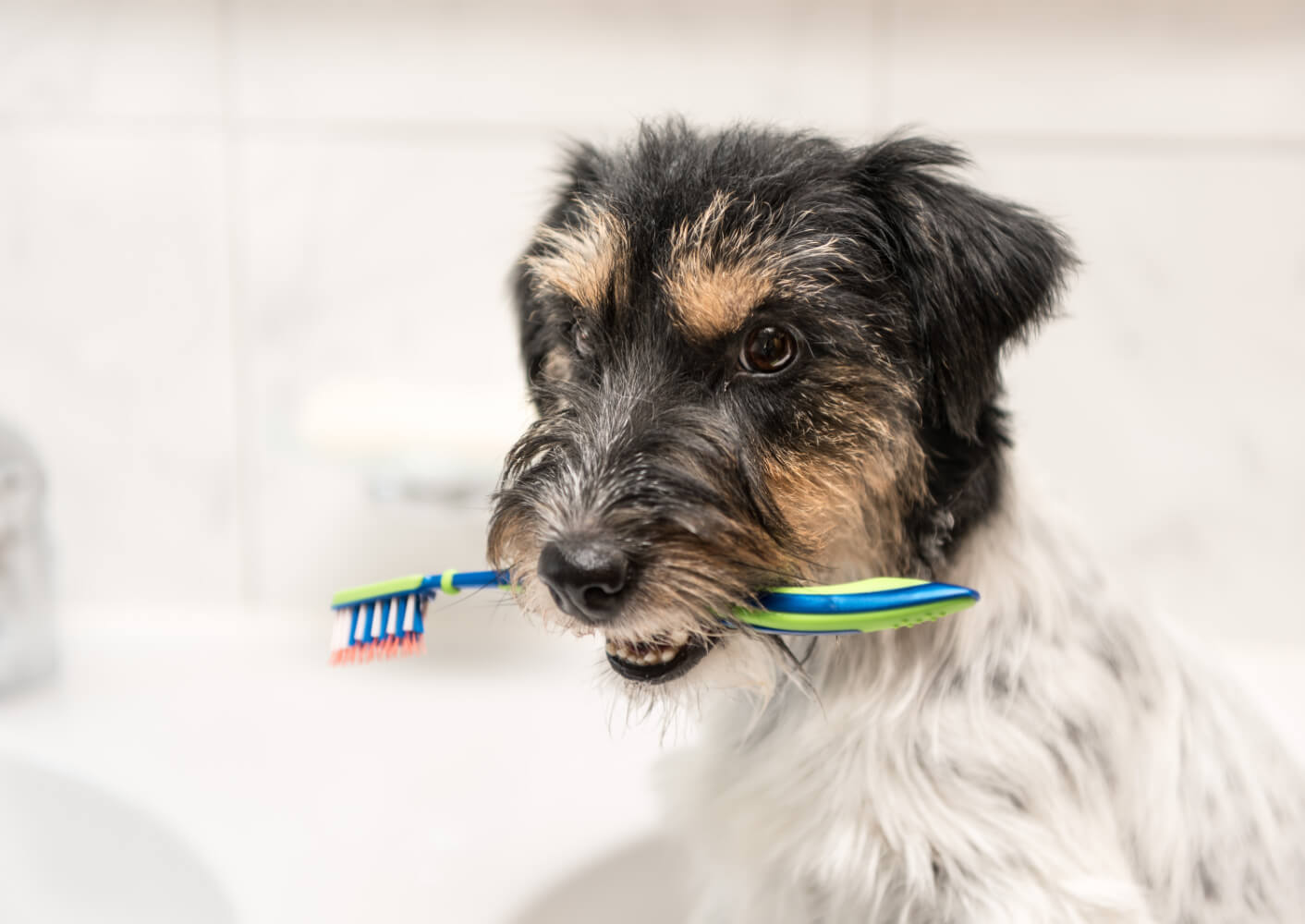
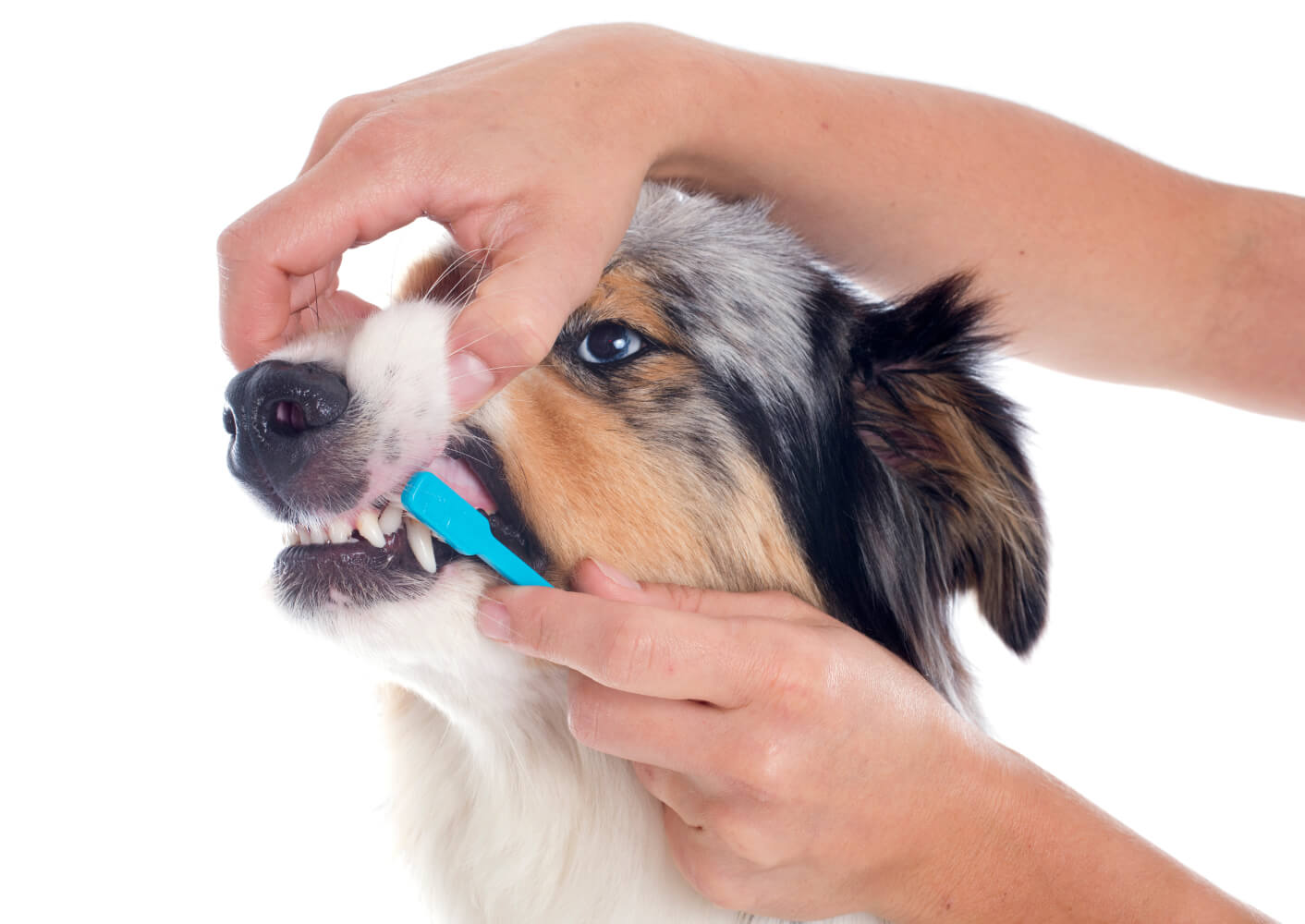
This is how it works: Brushing your dog's teeth properly
- Put dog toothpaste (special ingredients and meat flavour for better acceptance) on your finger and let your dog try it out
- Carefully pull up the lips and brush from the gums towards the teeth (with a dog toothbrush or fingerstall).
- Brush from the canines to the molars on one side (outside only!)
- Repeat on the other side
- Carefully brush the incisors
- Most important: Praise your dog profusely and reward him with a cuddle!
Teeth change in puppies
Like human children, puppies also have to go through the change of teeth: At first they are born without teeth - from the third week of life the 28 milk teeth erupt. These are replaced by the adult teeth between the 3rd and 5th month of life. Depending on the breed of dog, the time of tooth replacement can vary (in larger dogs it starts earlier than in small dogs). As a rule, it takes about 3 months until all 42 teeth are there. Tooth change is often easier in larger dogs than in smaller breeds. Small dogs, such as the Chihuahua, tend to have persistent milk teeth (the milk tooth does not want to fall out even though the new tooth is already coming in). This can lead to misaligned teeth and a crooked bite.
For some puppies, teething leads to severe toothache, because the gums in particular are exposed to great stress during this time. The first signs of teething pain are restlessness and poor sleeping behaviour. Increased temperature (fever), diarrhoea or excessive salivation can also occur during teething.
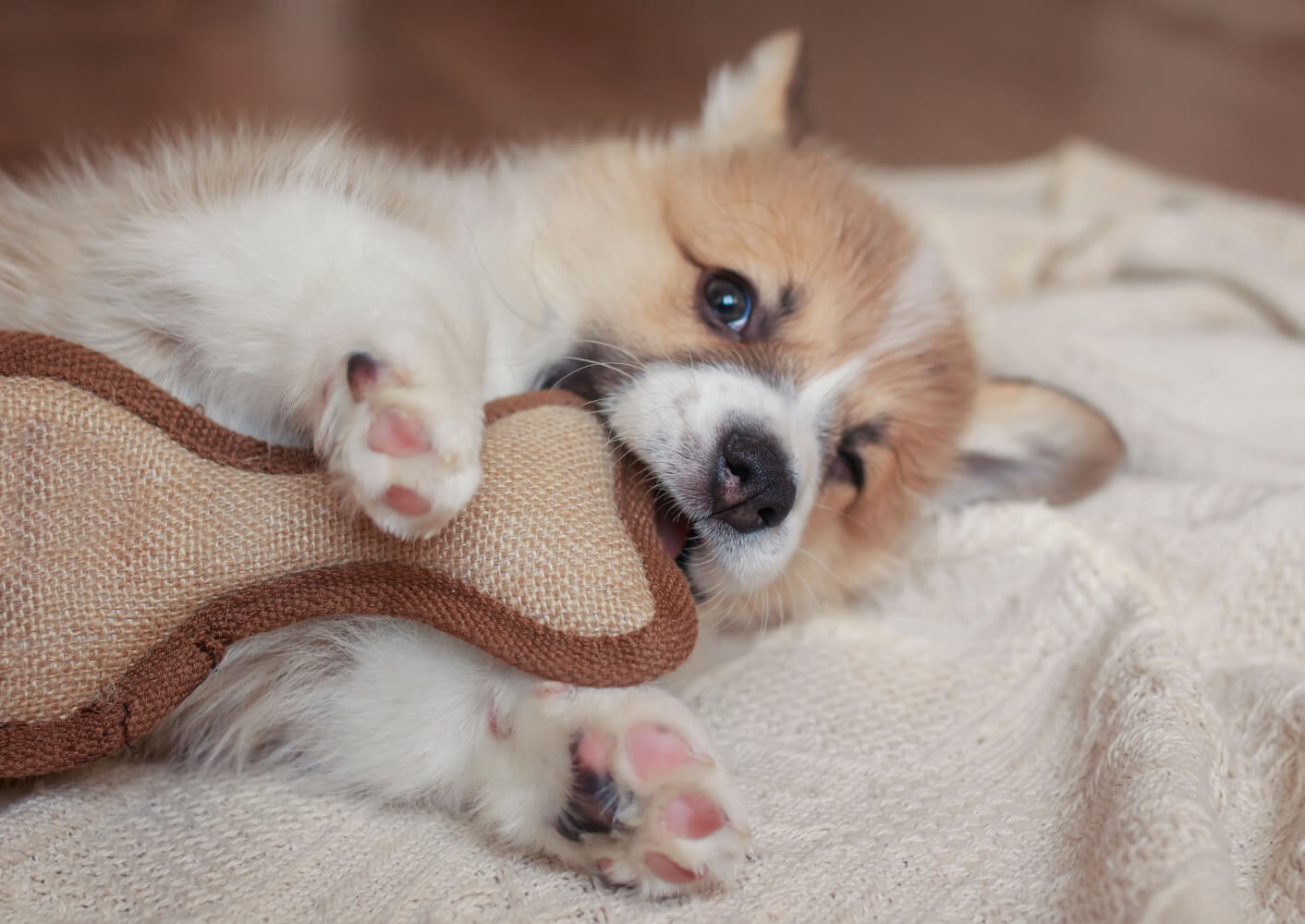
Your little pelt-nose needs your loving attention now - the following measures will make it easier for him:
- Soak dry food in lukewarm water or switch to wet food.
- Avoid tugging and anything that stresses the gums.
- Massage the gums
- Special chew toys (chew sticks, Kong) for puppies distract them and help them get rid of their milk teeth.
- Chew bones, beef ears etc. taste good and the intensive chewing loosens the milk teeth
- Cool toys or chew sticks in the fridge - this cools the sensitive gums while chewing.
- Be lenient if your puppy chews on furniture during teething.
Check your puppy's teeth:
- Are the teeth erupting properly?
- Do you notice any bleeding or inflammation in the mouth?
A dog only changes teeth once in his life, so you should get him used to dental care at a young age to keep your pet's teeth intact. If your adult dog loses one or more of its teeth, you should have the cause clarified at the veterinary clinic.
You should remember this
Dr.Clauder's for successful dental care
Tartar and plaque adé with Dr.Clauder's dental care products:

